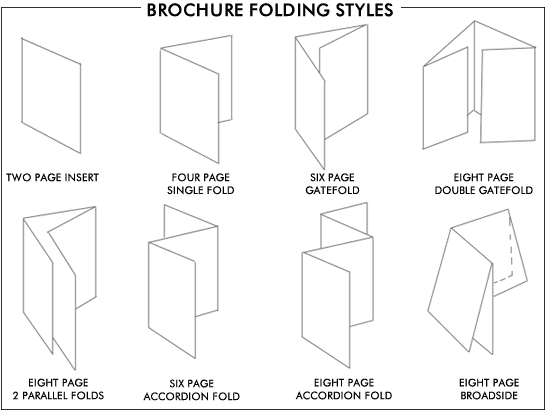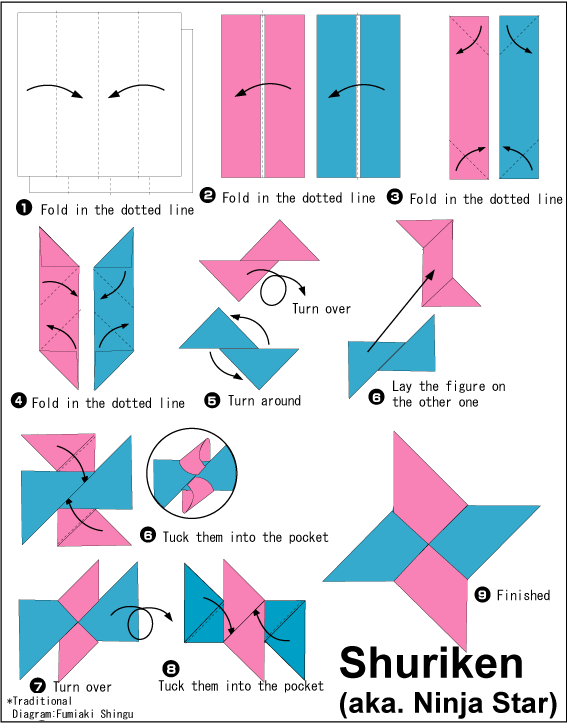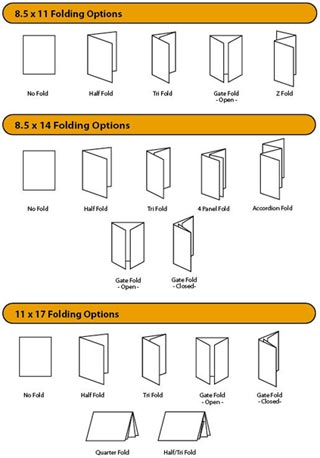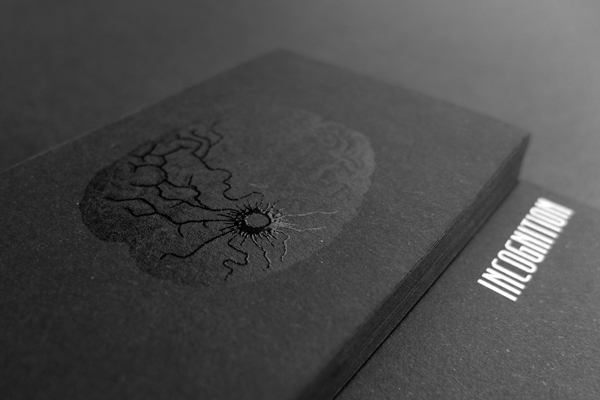SPEC WORK
The ethics of doing spec work have gotten a ton of attention in the past couple of years in the design world. Designers have mostly come down firmly on the side of not doing spec work. And for good reason. There are a number of disadvantages to doing work for spec, and it’s not just bad news for the designer. Clients can suffer from spec work, too.
First, lets look at the arguments for doing spec work. There are a few, and on a purely superficial level, they seem like good ideas. New designers will often be willing to work on spec to build their portfolios. Sometimes they can pick up more prominent clients by promising the client that they’ll only pay if they like the design, or by entering design competitions for bigger companies or organizations.
Companies requesting spec work often feel like they’ll get better designs, since they’ll have a variety of designs to choose from. They feel that by making it a competition, they’ll somehow get better work.
Let’s look at the negative impact of spec work on clients, first:
- Spec work causes designers to raise their prices, to cover the costs of work that was performed but not paid for.
- Designers don’t have a full picture of what the client needs, so the designs tend not to be as good as they could be if a full fact-finding phase was conducted.
- Clients have to spend hours sifting through mediocre work with no guarantee that they’ll find an entry to suit their needs.
The second one there is probably the most damaging. A designer can’t create the best design without a full picture of the client’s business and their needs. Most clients aren’t adept enough to put together a thorough design brief for these contests that gives a true picture of what they need. Skilled designers can ask the right questions to get the information they need to create an awesome design, but that’s generally not possible in these kinds of contests.
As far as the damaging effects on designers and the design industry as a whole, we’ve already mentioned that designers doing spec work are effectively working for free at least part of the time. What other industries expect their workers to perform a day’s work without a guarantee of pay? Would an accountant agree to work for free and only be paid if you’re satisfied with their work? Not likely. Other negatives for designers and the industry include:
- Time you spend on a spec project could be better spent on paid work, or on marketing yourself to get paid work.
- You’re opening yourself up to infringement. A company might go with a different designer, but then incorporate parts of your work, without paying you.
- You’re setting a precedent that design work isn’t as valuable as other kinds of work, and that it’s all just one big contest, not “real” work.
The last one there is the one that tends to get designers who have nothing to do with spec work worked up. Because when you take on spec work, you’re inevitably damaging the standing of the entire design industry. It’s a bad precedent, and one that could prove difficult to overcome.
If you’re a student or new designer looking to add pieces to your portfolio, there are a few other options available to you other than spec work.
- Get in touch with local charities or community groups and see about doing some pro-bono work for them.
- Get in touch with friends or family who own businesses who might want some design work done and see about making a trade or doing some work for free. Make it clear that this is a one-time offer, and that you’re doing it to add to your portfolio.
- Create projects for fake clients, or create some stock designs to sell. This is a great way to add to your portfolio without providing work for free, and if you sell stock designs, you might even be able to earn some money on the side.
Another reasonable option that can work for some projects is to offer to do only a part of the project (for your regular hourly rate), and if the client likes it, they’ll have you do the rest of the project, too.
This way, you’re getting paid for the work performed, but the client doesn’t have to shell out a huge amount of money when they’re unsure. Just make sure you get a deposit or payment up front in full, and that they understand that additional work will require additional payment.
GOOD CONTEST AND CROWDSOURCING OPTIONS
Now, just because most spec work could unequivocally be called unethical doesn’t mean that there aren’t any examples of companies that use crowdsourcing in positive ways.
Crowdsourcing contests that are aimed squarely at fans and amateurs, rather than professionals, are generally good fun. These contests aren’t usually looking for professional-caliber design work (no big rebranding campaigns or the like), but are rather looking for ideas that come from the people who love their products. These types of contests often don’t have cash prizes, but rather prizes of products or related items (trips, electronics, etc.).
The big difference here, again, is that these contests are aimed at non-professional fans of a company, not at design professionals. They’re simply a way of giving fans more input and making them feel more involved, and are more of a PR effort than a serious search for a new design or artwork.
Another popular type of design contest is one run for children and/or students. These are often done by charities or organizations, and the prize is rarely money (though sometimes prizes are things like scholarships). Sometimes the winning design is used in some sort of marketing or product sales, but just as often they’re simply showcased as the winner of the contest. When the contests are for older students (including college students), the prize might even be something like an internship.
These kinds of contests, when squarely aimed at students rather than professionals, is a good example of a positive type of design contest. The students can add the contest to their college applications or future resumes, but these contests are generally done more to raise goodwill than for any other purpose.
TAKING ADVANTAGE OF CLIENTS
Any designer who’s been in business long enough has dealt with nightmare clients that are never satisfied and can never make up their minds. We’ve dealt with other clients who are assertive and demand that we meet our obligations as laid out in the contract to the letter (which we should be doing anyway).
But then, every once in awhile, we get a client who isn’t assertive, who doesn’t hold us accountable, and is generally so agreeable that they’ll never complain or hold anything against us. This can be a dream client. But this can also make it very tempting for some designers to take advantage of their goodwill.
These clients won’t complain if we miss a deadline or don’t do everything quite as they asked. They’ll still pay us on time and tell their friends about us. But that doesn’t mean it’s ethical not to hold up our end of the bargain.
In most cases, designers know a lot more about design than their clients do. We know more about the technical aspects, the aesthetics, and the process. And clients put their trust in us to steer them in the right direction. They also trust us to act like professionals and to respect them in return for them respecting us.
Whatever client you’re working with, whether it’s the nightmare client who demands you go way above and beyond or the pushover, make sure you uphold your side of the contract. Do what you said you’d do, when you said you’d do it, and if for some reason you can’t, offer to do what it takes to make up for it.
TAKING ADVANTAGE OF OTHER DESIGNERS
If you ever subcontract or outsource any part of your design work, make sure you’re not taking advantage of your contractors.
Sure, it’s reasonable for you to make some profit on the work they’ve done (after all, you’re the one who had to secure the contract and serve as a liaison with the client), but that doesn’t mean you can take advantage of a contractor.
It’s not ethical to charge your client $100/hour for design work that you’re then outsourcing for $10/hour. Your client wouldn’t appreciate it, and I’m sure your subcontractor wouldn’t appreciate it if they found out you were marking up their services 1000%.
The general rule of thumb here is that if you’d be ashamed to tell your client how much you actually paid for the work performed, you’re probably stiffing your subcontractor.
OVERCHARGING
Clients don’t always know what goes into a design project. They don’t know whether you spent an hour or ten hours working on something. That makes it easy to charge clients way more than what your usual hourly rate would be.
Then again, the ethics of this also depend on how your rates are structured. If you charge a set hourly rate based on the time you actually work on a project, then charging for more hours than you actually spent on a project would almost certainly be unethical. But, if you charge by the project or based on market factors, then you’re not agreeing to charge based on the time you spent.
In those cases, as long as you’re charging what you and the client agreed upon, there’s nothing unethical about it if your hourly rate ends up being $500 an hour because this particular project went more smoothly than most others. Devaluing your work by charging less than what the client expects could end up doing more damage to your longterm business and the industry in general than charging the agreed-upon fee. After all, what happens if their next project for you is a nightmare and they expect another discount?
Make sure that you’re also upfront with clients about when they might incur charges above and beyond what’s spelled out in your contract. Clients who suddenly get a bill that’s 15% or 20% higher than what they originally expected aren’t going to be happy.
It’s a good idea to not only lay out in the contract when extra charges might occur, but also to let the client know when a request they’re making will actually result in those extra charges.
FULL DISCLOSURE OF TERMS
It’s important that you disclose all the terms of your work with your clients. This means everything from payments and when they might incur extra charges, to who owns the rights to the work you create. Ideally, this should all be spelled out in a contract.
Designers who aren’t working with a contract really should start. While a fully legal contract is a good idea, you should, at the very least, have a document that both you and your client sign that spells out what the work is to be performed and what both sides expect.
Make sure, too, that you let your clients know if any part of their design includes stock artwork, and what the licensing terms are. The last thing you want is an angry client coming to you saying that they’re being sued because they used some part of your design in a different way and then found out that part of the design wasn’t original.
In fact, it can be a good idea to tell clients up front that you may use stock artwork for aspects of the design (textures or patterns, for example). Some clients may not want any stock artwork to be used, and it’s better to know these things up front.
OWNERSHIP OF SOURCE FILES
This is probably one of the murkiest areas of design ethics. Should you turn over the source files to your clients when you complete a project for them? While you may have made it clear that they own the design, do they own the files for that design?
I think a lot of designers handle this by only turning over source files if the client asks for them. After all, most clients don’t need (and won’t have any idea what to do with) your PSD files. But, in the event that they want to have someone else take over making changes and updates to their site (maybe they’ve hired someone to do these things in-house), it’s really the ethical thing to do to hand over these designs, unless it was spelled out otherwise in your contract.
WHEN A CLIENT/YOUR BOSS ASKS YOU TO COPY ANOTHER DESIGN
This is one of those unfortunate situations that crops up from time to time. You start working with a client and they give you some examples of sites they like to “give you ideas”. You come back with a mockup, and they suggest changes. After one or two more rounds of revisions, you realize that they don’t want their site to be reminiscent of the site of one of their competitors, they want it to be identical.
There are two kinds of clients who do this. The first are the clueless ones. They just don’t get why it’s wrong to use someone else’s design. In those cases, education is the best answer. Tell them why it’s unethical and that you can’t do it, but that you’ll create something that’s better, because it will be specifically tailored to their business.
The other kind of client or boss that does this is the kind that knows it’s wrong, knows it’s illegal, but wants to do it anyway, hoping to ride on the coattails of the more successful business. These are the people who will blatantly tell you that they want it as identical as you can make it without getting them sued.
My best advice when dealing with these kinds of clients is to extricate yourself from the business relationship as soon as you can. You won’t be able to reason with them, and they’ll likely fire you anyway if you refuse to steal the hard work of others.
Stealing the designs of others is always unethical. If your client or boss doesn’t understand this, it’s time to find a new job or a new client.
IT’S REALLY ABOUT COMMUNICATION
A large percentage of ethical dilemmas in the design world can be overcome through clear communication between client and designer. If designers get a thorough idea of what their client wants and expects before signing a contract, they’re less likely to run into potential ethical issues.
Unethical practices hurt the entire design industry. Don’t be afraid to speak out against unethical practices, though make sure you’re doing so in a way that promotes ethical behavior as opposed to just ranting (though ranting can be helpful at times, too).
[http://www.webdesignerdepot.com/2011/02/ethics-in-the-design-field/]










































